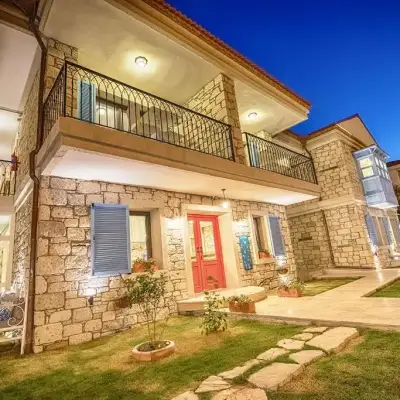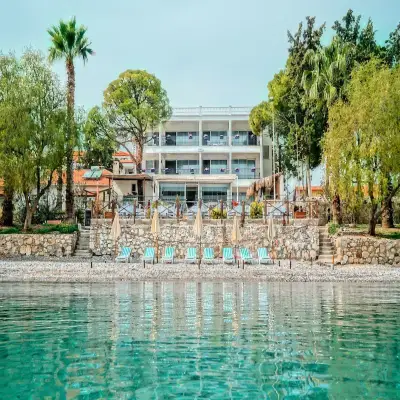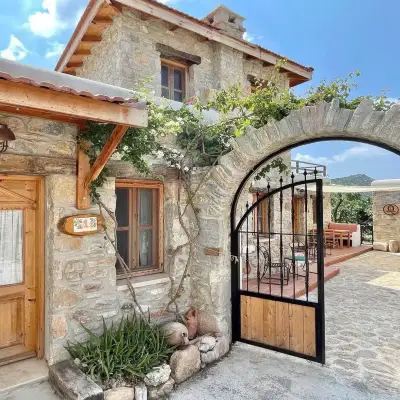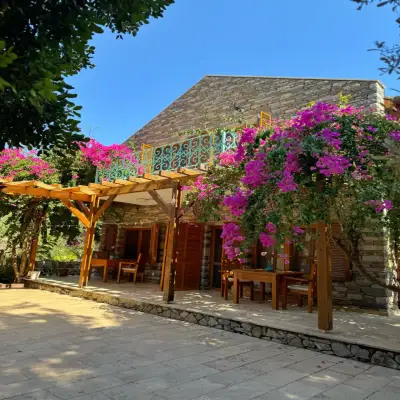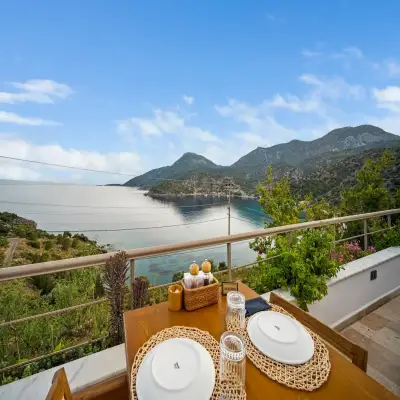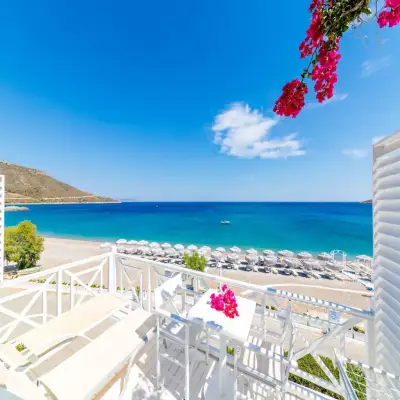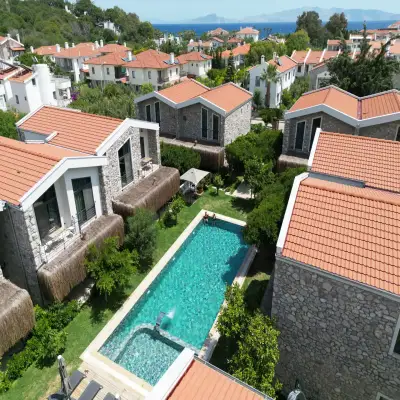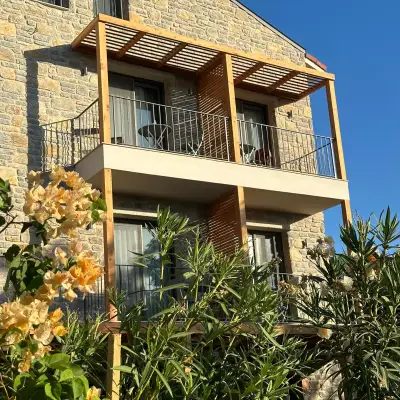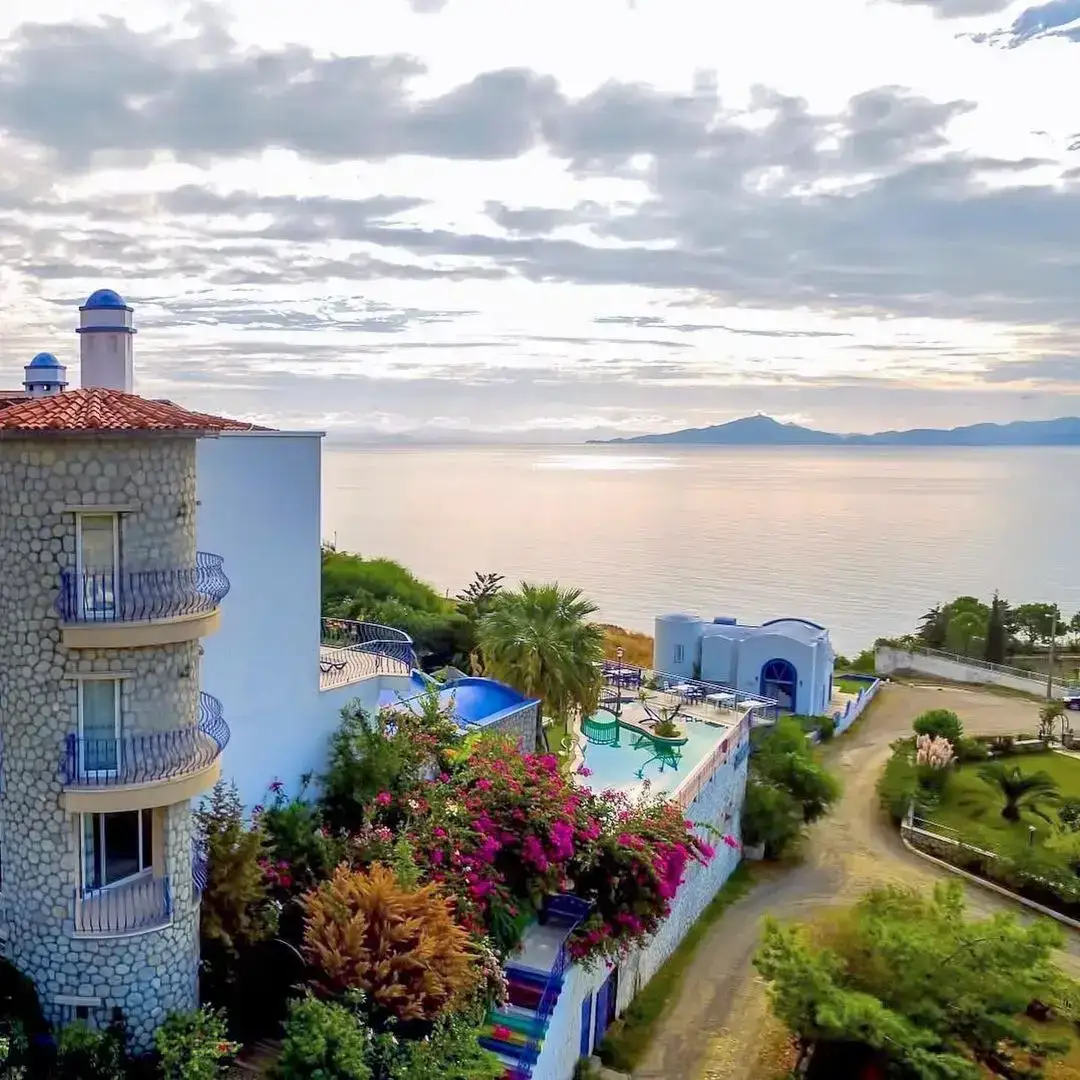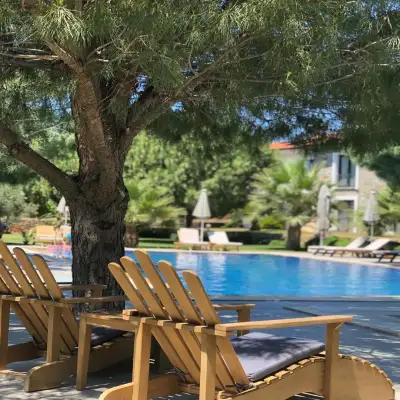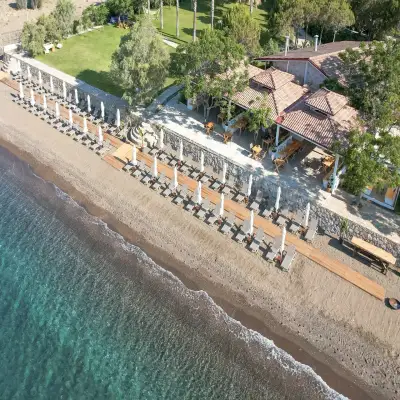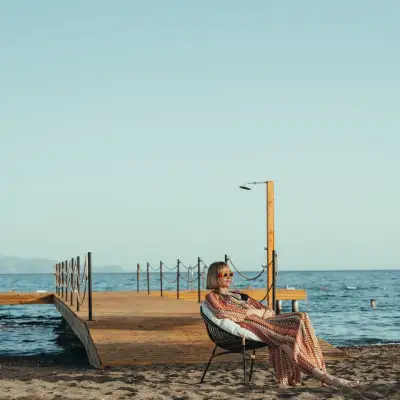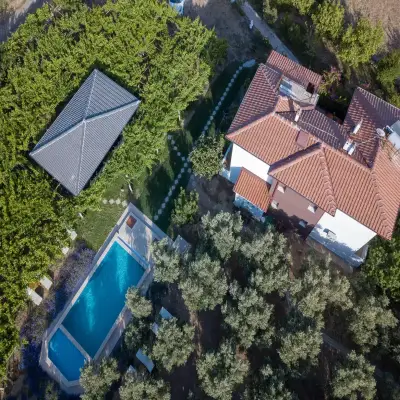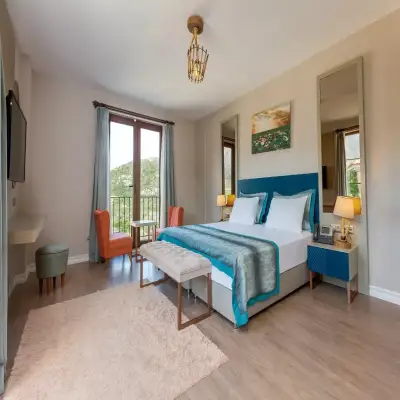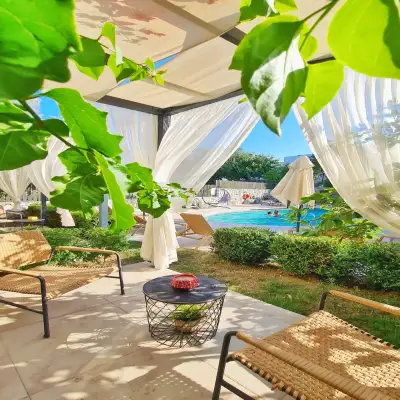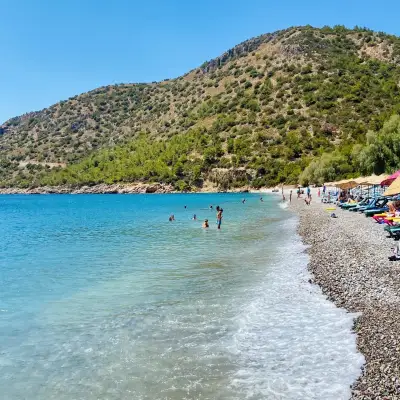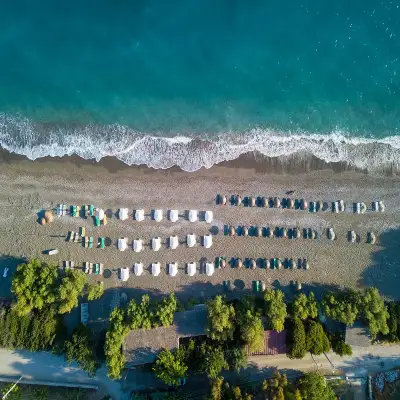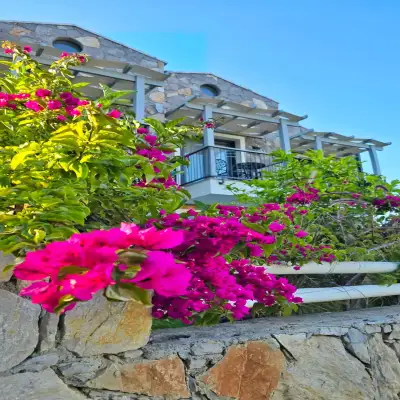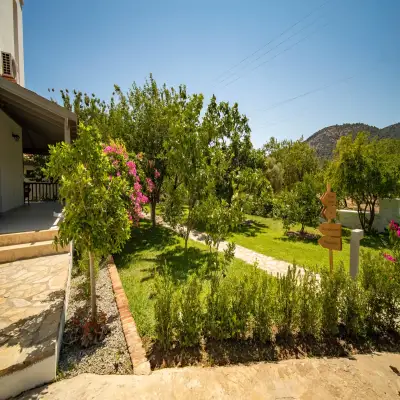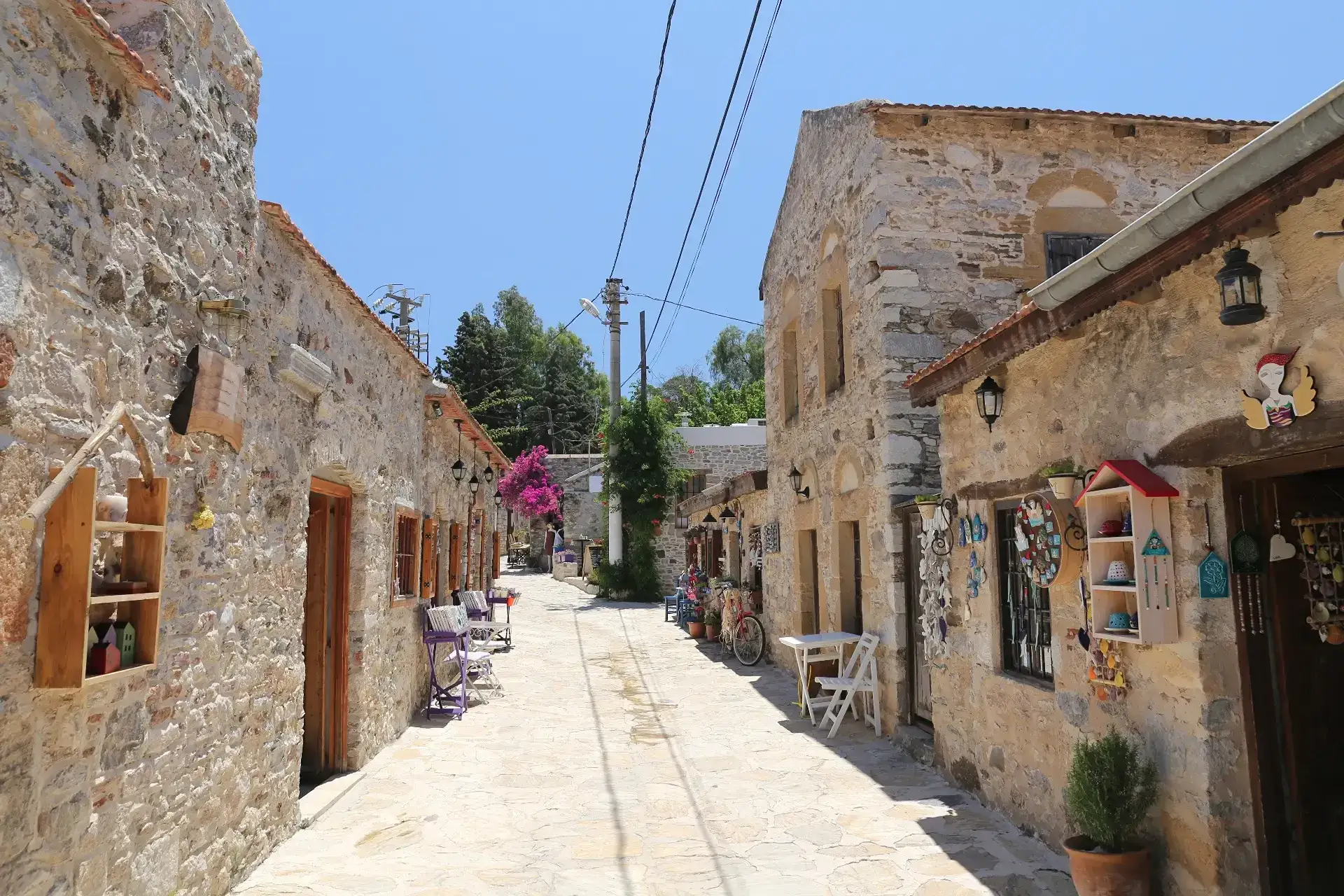
Places to visit in Datca
Eski Datça Neighborhood: When you follow the yellow signs 2.5 kilometers from İskele Neighborhood, you can reach Eski Datça. Old Datça neighborhood has an interesting texture with its stone houses and stone paved streets. The house of Datça lover poet Can Yücel and the Can House built in his memory are also located on the street named after him. Eski Datça, which was once the district center of Datça, is now one of the upper neighborhoods of Datça. With its preserved architecture, the stone knitted buildings suitable for the region have been preserved and restored. It is a typical village reminiscent of a theater setting with its stone and narrow roads. When talking about Old Datça, it would be impossible not to mention the famous poet Can Yücel. It was important for him to be able to stay in Eski Datça, where he spent the last years of his life, in this place, which was also the subject of his poems.
Reşadiye Village: Reşadiye, one of the oldest settlements in Datça, is 5 km. away from the city center (İskele Mahallesi). This region, where Mehmet Ali Aga Mansion is located, attracts a lot of attention with its history and mosque.
Hızırşah Village: The closest village to Datça city center, Hızırşah is famous for its ceramic workshops from the 4th century and Selçuk Mosque.
Mesudiye Village: Mesudiye, one of the most beautiful areas of the region, is located 20 km. away from Datça with its three charming bays (Hayıtbükü, Ovabük and Kızılbük).
Gebekum: It is 4 km. away from Datça. Gebekum, which has a beach with a length of 7 km, is very suitable for swimming. The beach multiplies and spreads itself with the effect of the wind. It has also formed a shallows that allows you to reach the island opposite it by walking from the sea with dune movements.
Kargı Bay: It is three kilometers from the town center and can be reached on foot. Closed to the north and southwest winds, the natural beauty of the bay is calm and attractive. The beach is pebbly and there are also food and beverage facilities and a small yacht marina. There is a stream flowing into the bay where the municipality's private public buses operate. The ruins of the old church nearby are unfortunately in ruins, but they have survived to the present day.
Palamutbükü: The bay is 25 km. from the town and 10 km. from the ruins of Knidos and is one of the most famous beaches of the peninsula. There are accommodation facilities as well as food and beverage facilities in the area. The long beach is a mixture of pebble and sand.
You can visit the ancient city of Knidos. Datça Knidos is a city that will forever preserve its beauty that the ages cannot erase and time cannot fade. The most interesting structure of Knidos is the Temple of Aphrodite. The most beautiful Aphrodite that the human image can think of, the first naked woman statue in the history of art, Knidos Aphrodite.
You can also see the Sundial of Eudoxus, the famous mathematician and astronomer from Knidos who lived in the IV century BC. This clock, which shows the seasons and hours, is unique in the world.
The Lion Tomb dated around 350-400 BC. At the top of this Doric tomb, which was originally in the shape of a pyramid, there was a 3 m. long, 1.80 m. high lion statue. Weighing 1 ton, this magnificent lion is now in the British Museum.
Körmen Harbor, where the merchant ships going to Knidos in ancient times took shelter in stormy weather and unloaded their cargo. Old Datça is one of the places worth seeing in Datça with its stone houses, narrow streets transformed into a riot of colors by bougainvillea hanging from the garden walls, and poet Can Yücel's house turned into a museum. The only place where the Aegean Sea and the Mediterranean Sea can be seen together is Balıkaşıran.
You can go to the untouched bays and bends of Datça by joining boat tours. You can visit its beaches and swim at a different beach every day.
For accommodation suggestions, you can check our Datça Hotels page.


